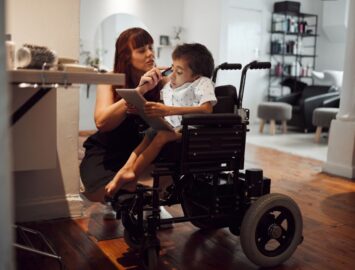Last Updated on November 19, 2024 by Michelle Wan
For families navigating the challenges of birth injuries, therapy is often a cornerstone of treatment and recovery. From improving mobility and communication to enhancing independence, therapy plays a vital role in supporting a child’s development. However, these therapies can also be costly, often requiring long-term commitment and careful financial planning. Understanding the types of therapy available and their associated expenses can help families prepare and advocate for the resources their children need.
In this article, we’ll explore the therapy expenses of birth injuries and as well as their costs, and the options available to help families manage these expenses.
Common Therapies for Birth Injuries
Physical Therapy
Purpose:
Focuses on improving strength, flexibility, balance, and coordination, helping children achieve mobility milestones like sitting, crawling, or walking.
Cost:
Sessions typically range from $100 to $200 each, with many children requiring weekly or biweekly appointments. Over a year, this can total between $5,000 and $10,000.

Occupational Therapy
Purpose:
Helps children develop the fine motor skills needed for daily activities such as feeding, dressing, and writing.
Cost:
Each session ranges from $120 to $200, with yearly costs often exceeding $7,000 for consistent therapy.
Who Needs It:
Ideal for children with motor control difficulties or sensory processing challenges resulting from birth injuries.

Speech Therapy
Purpose:
Supports children in developing communication skills, including speech clarity, language comprehension, and alternative communication methods (e.g., using AAC devices).
Cost:
Sessions cost between $100 and $250 each. Annual expenses can range from $5,000 to $12,000, depending on frequency.

Who Needs It:
Children with conditions affecting oral muscles or brain injuries like hypoxic-ischemic encephalopathy (HIE) may benefit.
Behavioural and Developmental Therapies
Purpose:
Includes Applied Behavior Analysis (ABA) therapy for developmental delays or behavioral challenges and broader developmental therapies that enhance cognitive and social skills.
Cost:
ABA therapy can be particularly expensive, with annual costs often exceeding $40,000 if intensive treatment is required.

Aquatic and Hippotherapy
Purpose:
These specialized therapies use water-based exercises (aquatic therapy) or horseback riding (hippotherapy) to improve muscle tone, coordination, and balance.

Cost:
Sessions cost $50 to $150 each, with additional equipment or facility fees. Future medical expenses vary but can reach $4,000 or more.
Who Needs It:
Children with mobility challenges often benefit from these therapies as complementary treatments.

Factors That Influence Therapy Costs
Frequency and Duration of Therapy
Many therapies require frequent sessions, particularly during the early years when development is most rapid. The duration of treatment often spans several years, adding to long-term costs.
Severity of the Injury
Children with more severe birth injuries, such as severe cerebral palsy, may require more intensive and frequent therapies, significantly increasing overall medical expenses.
Geographic Location
Urban areas often have higher session rates compared to rural locations.

Specialized Equipment
Therapies may require adaptive equipment, such as braces or communication devices, which add additional costs.
Managing Therapy Expenses
Insurance Coverage
Many insurance plans cover therapy for birth injuries, but coverage can vary. Parents should carefully review their policies to understand what is included and whether prior authorization is required.
Government Programs
Medicaid and Supplemental Security Income (SSI) often provide financial assistance for families of children with disabilities and injury damage. These programs can help cover therapy costs or adaptive equipment needs.
Nonprofits and Grants
Organizations like United Cerebral Palsy (UCP) and March of Dimes offer financial aid and resources for therapy expenses.

Birth Injury Compensation
Families whose child’s birth injury resulted from medical negligence may be eligible for compensation to cover therapy expenses and other medical costs. For more details, read our guide on How Birth Injury Compensation is Calculated.
Special Needs Trusts
Establishing a special needs trust can ensure funds are set aside specifically for therapy and other long-term care expenses.
Long-Term Financial Planning for Therapy Costs
The financial burden of therapy for birth injuries often extends throughout a child’s life. Planning ahead can make these costs more manageable. Families should:
- Consult with a financial planner familiar with special needs care.
- Explore structured settlement options if they’ve received compensation from a birth injury claim.
- Advocate for their child’s inclusion in state and local support programs.
Therapy expenses for birth injuries can add up quickly, but these therapies are vital to helping children reach their full potential. Understanding the costs, planning ahead, and exploring financial support options can make a significant difference in easing the financial strain on families. From physical and speech therapy to behavioural interventions, each therapy contributes to a child’s quality of life and development.
At Thomas & Wan LLP, we’re here to help families secure the resources they need for their child’s care. If you believe your child’s birth injury was caused by medical negligence, our experienced attorneys can guide you through the legal process and fight for the compensation your family deserves. Contact us today for a free consultation and let us help you provide the best future for your child.




